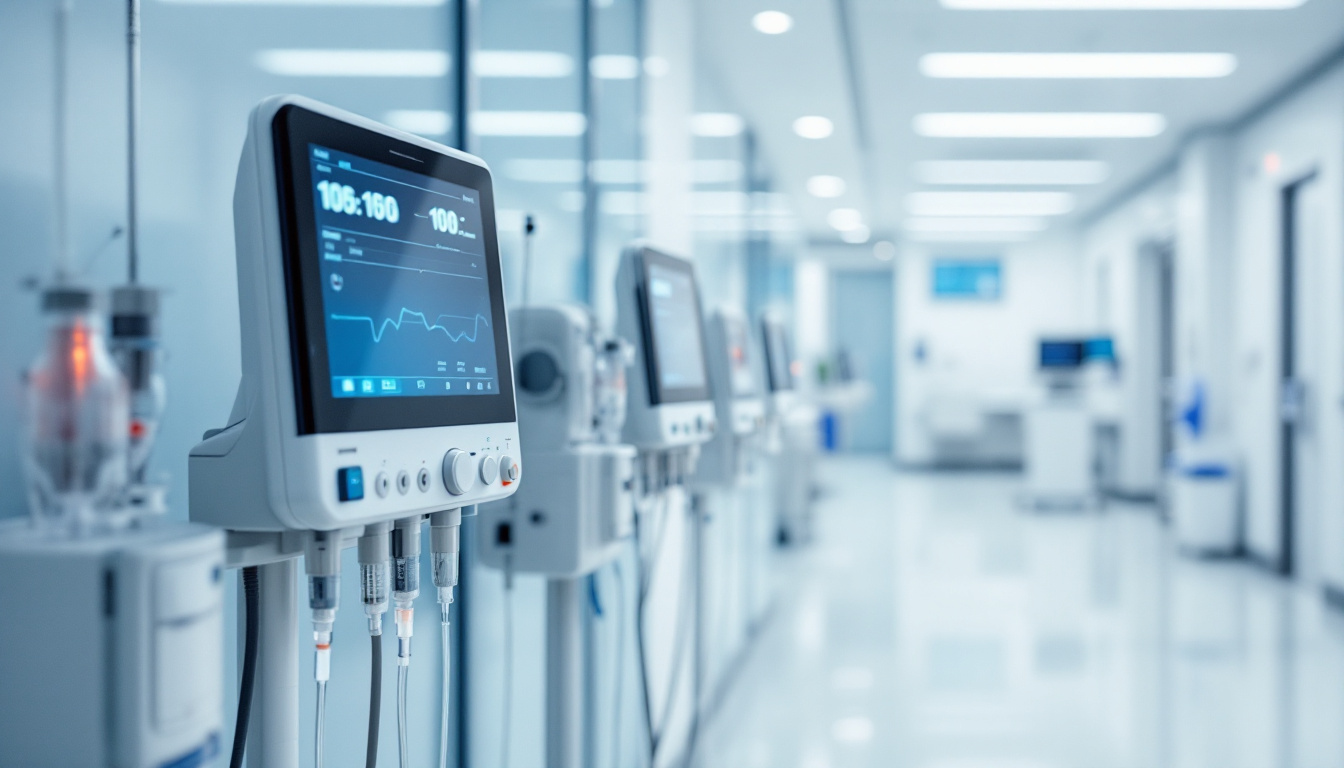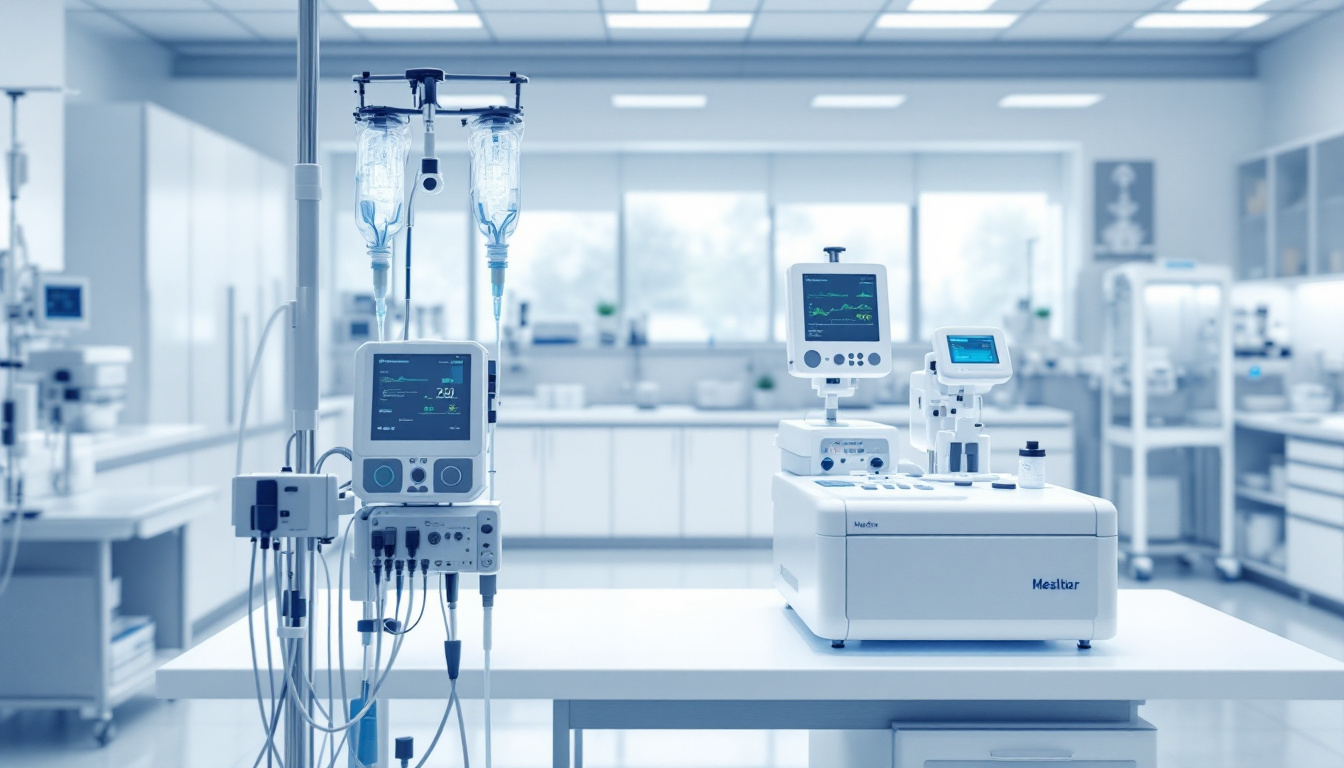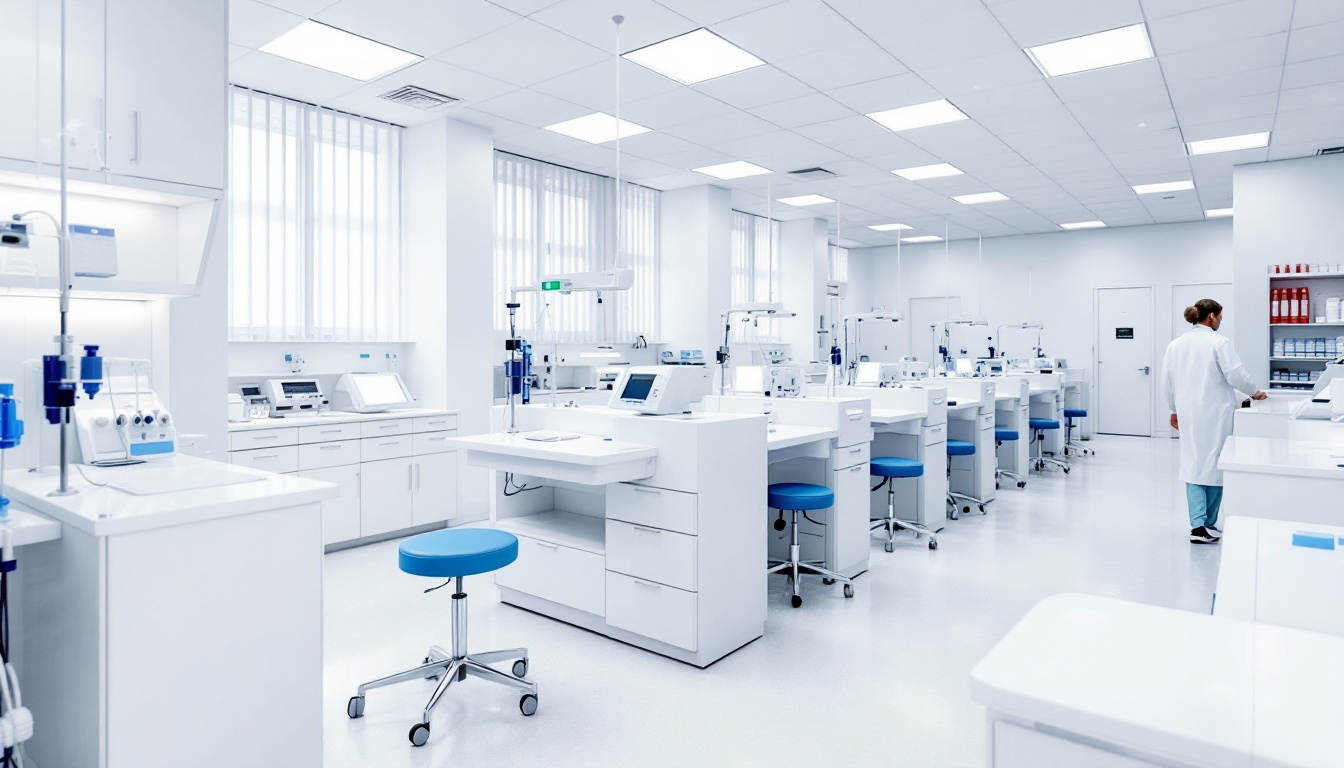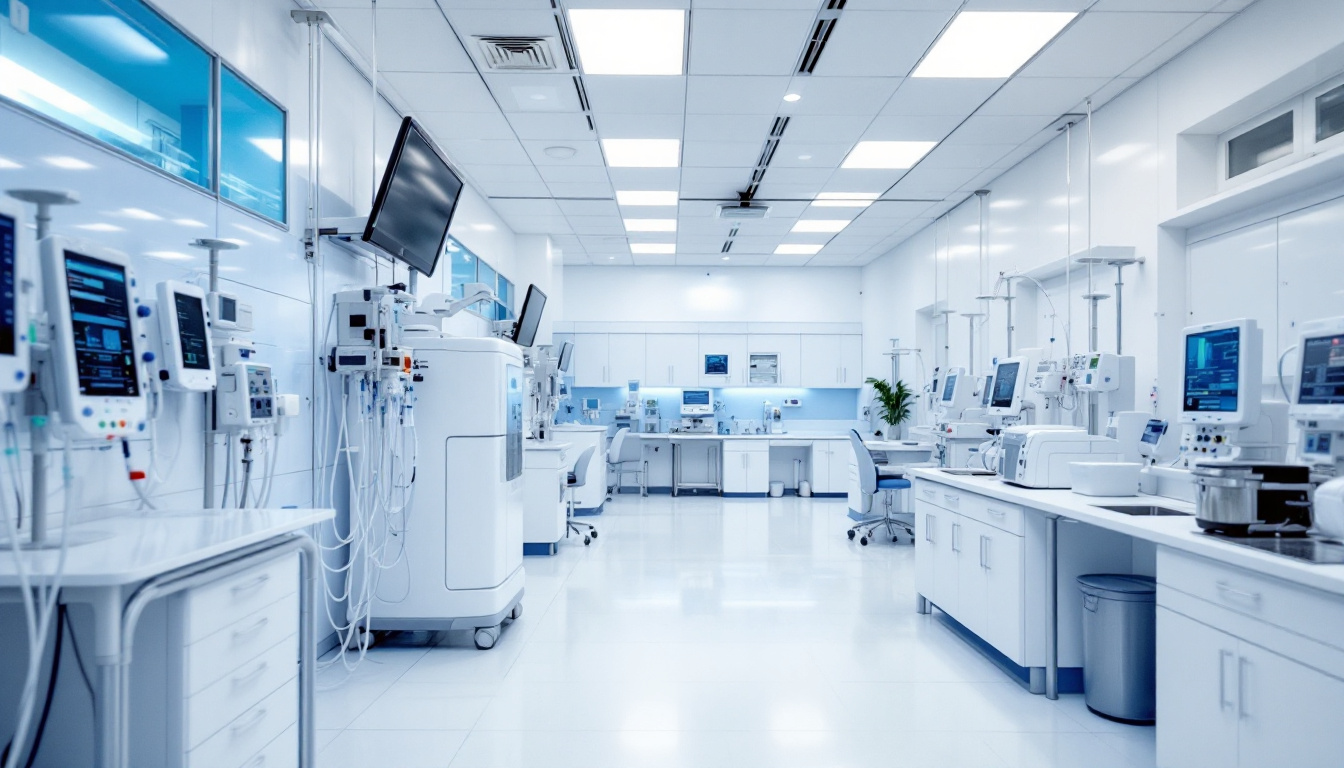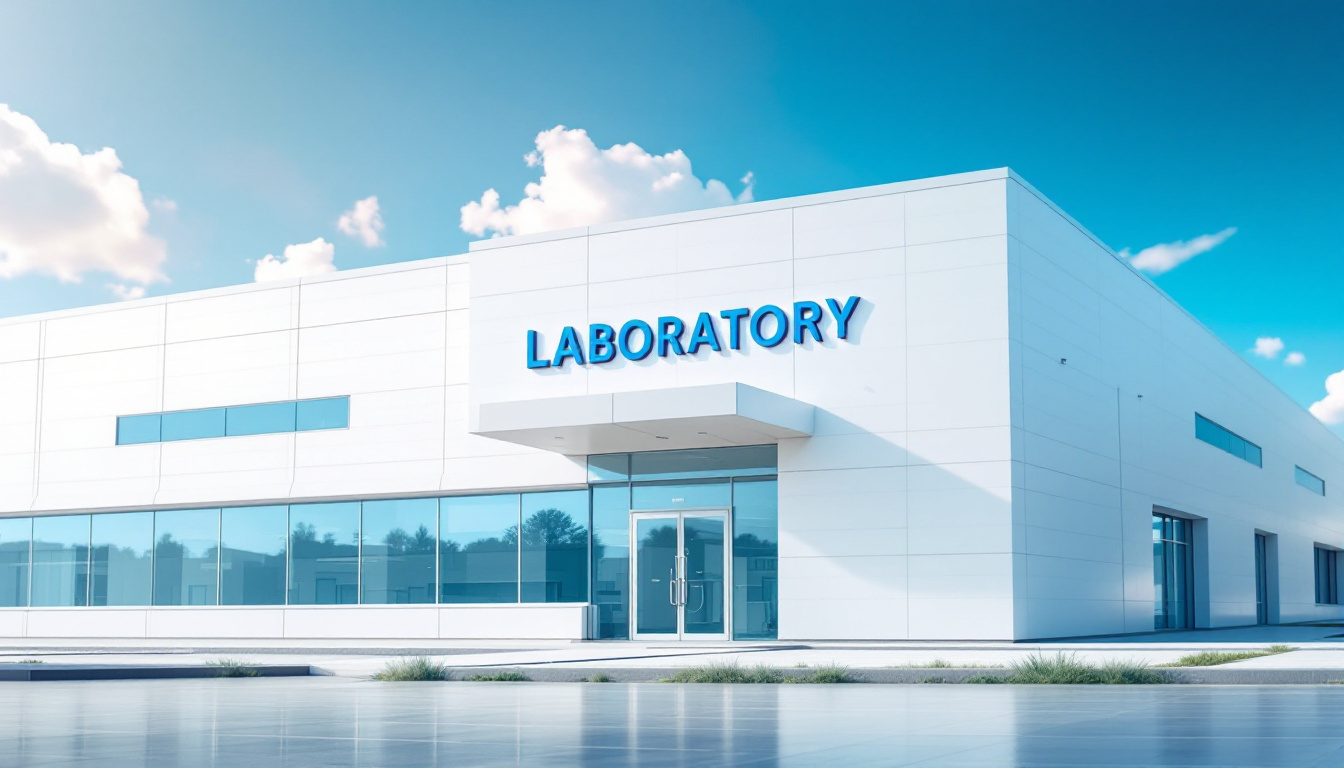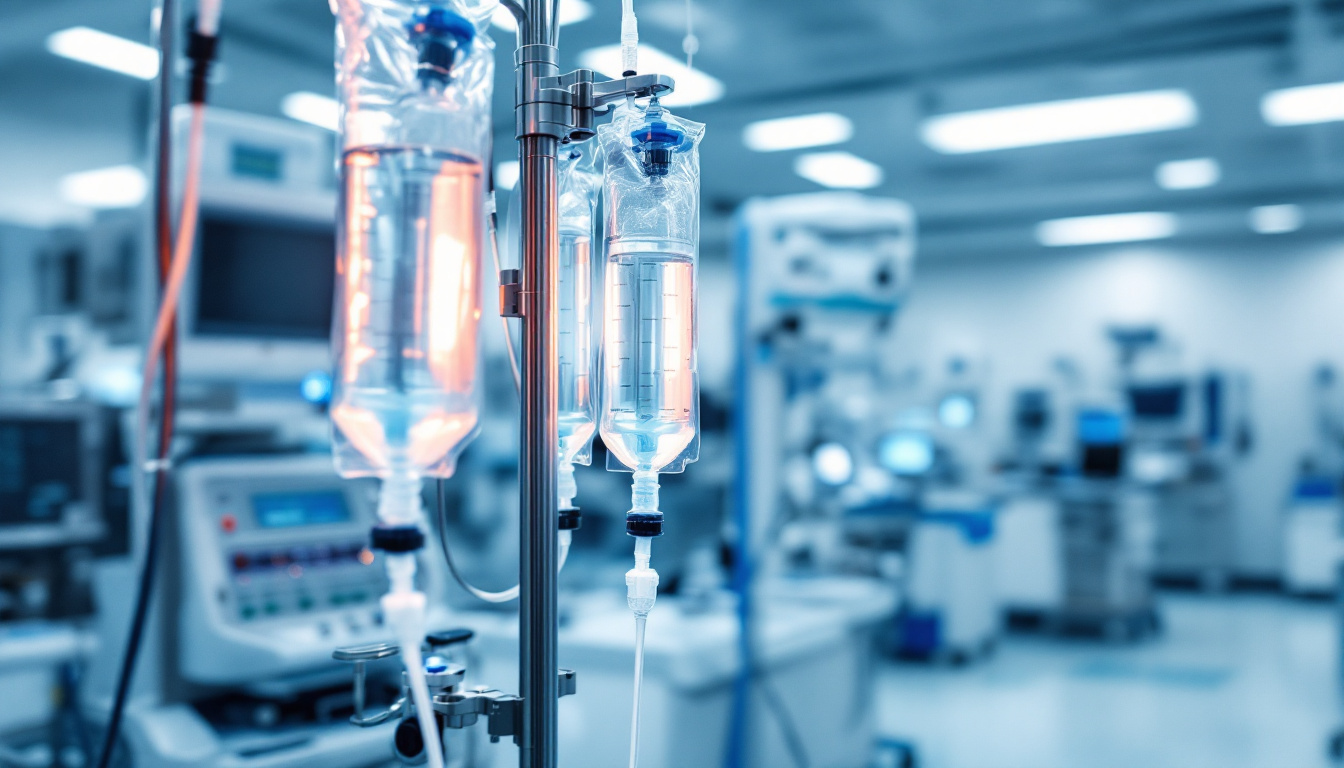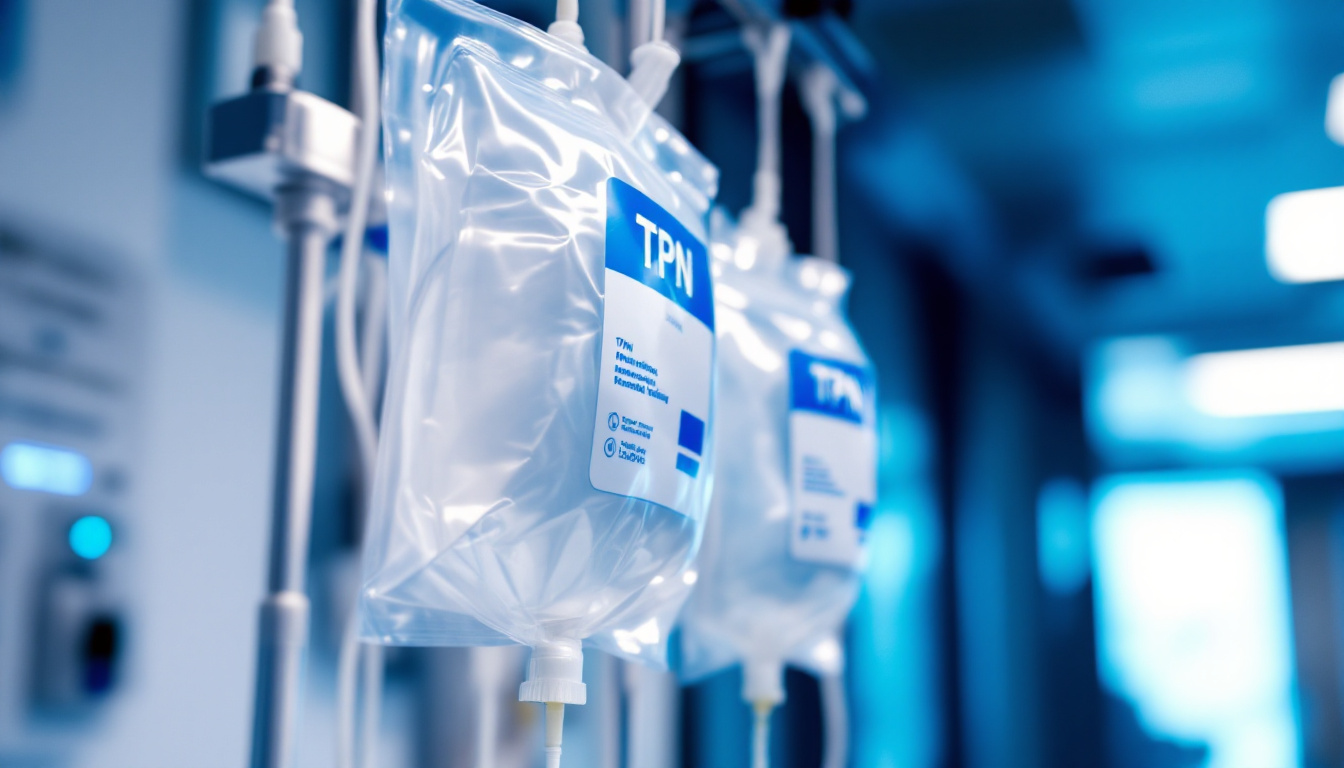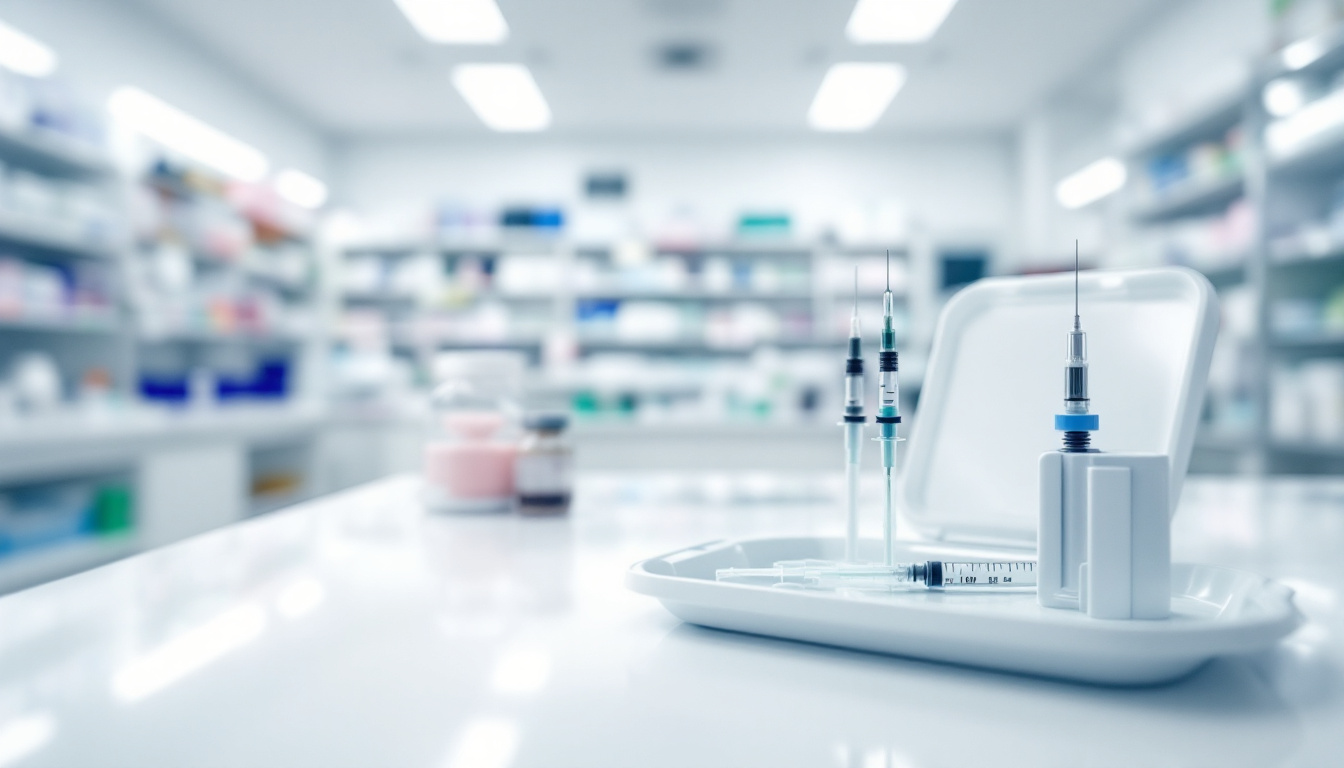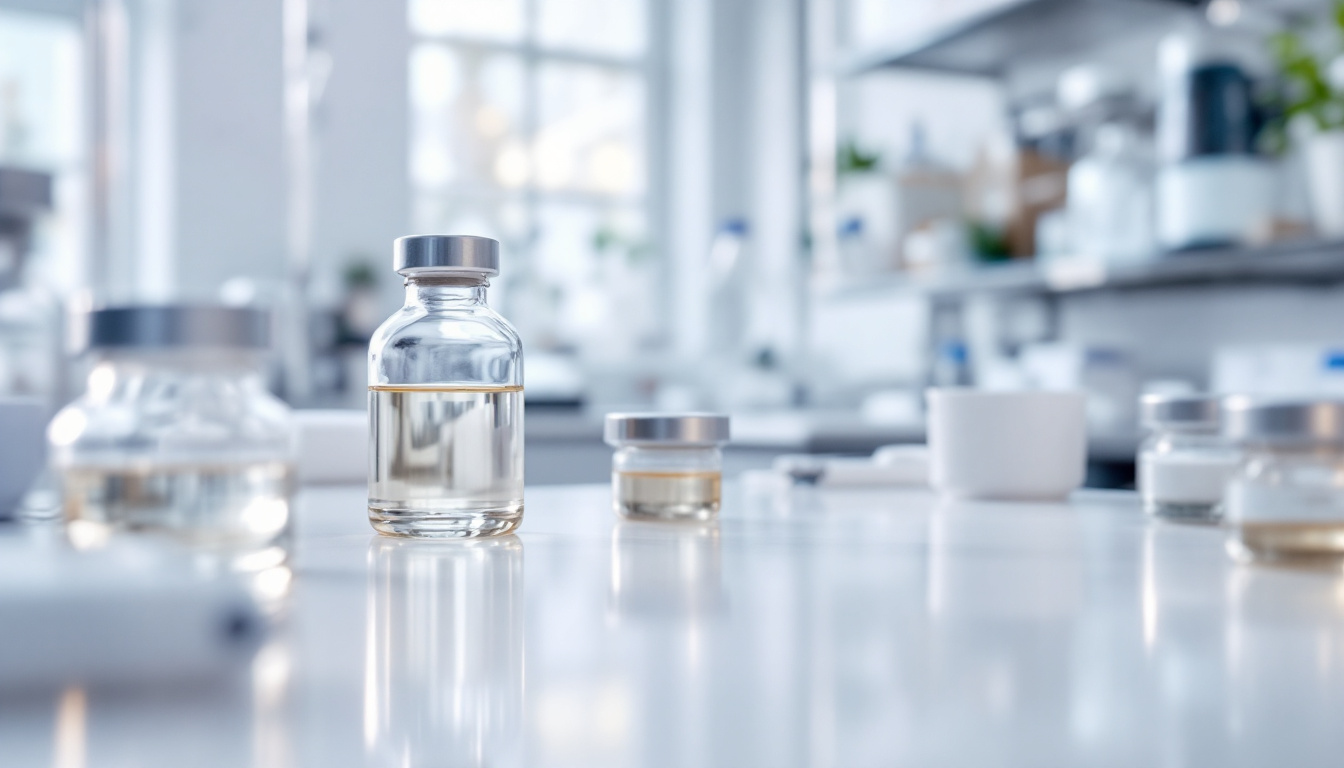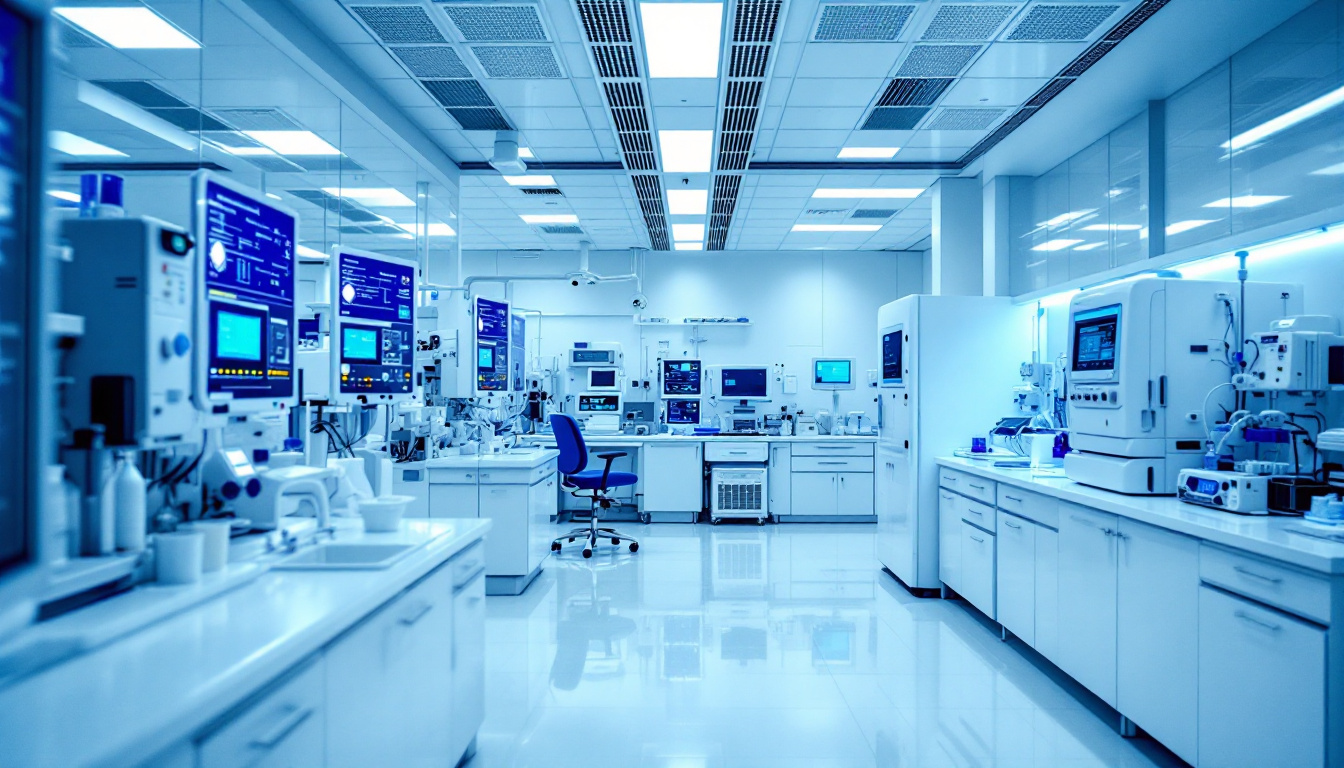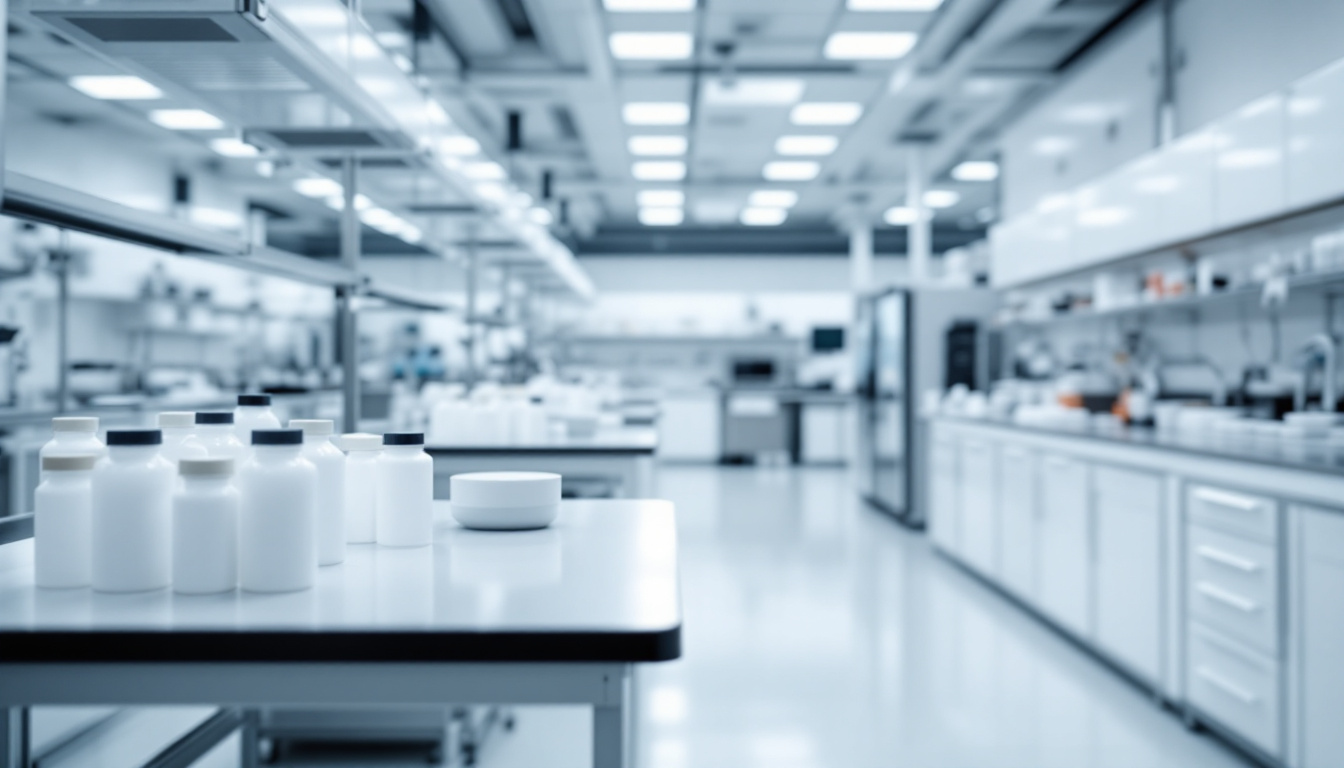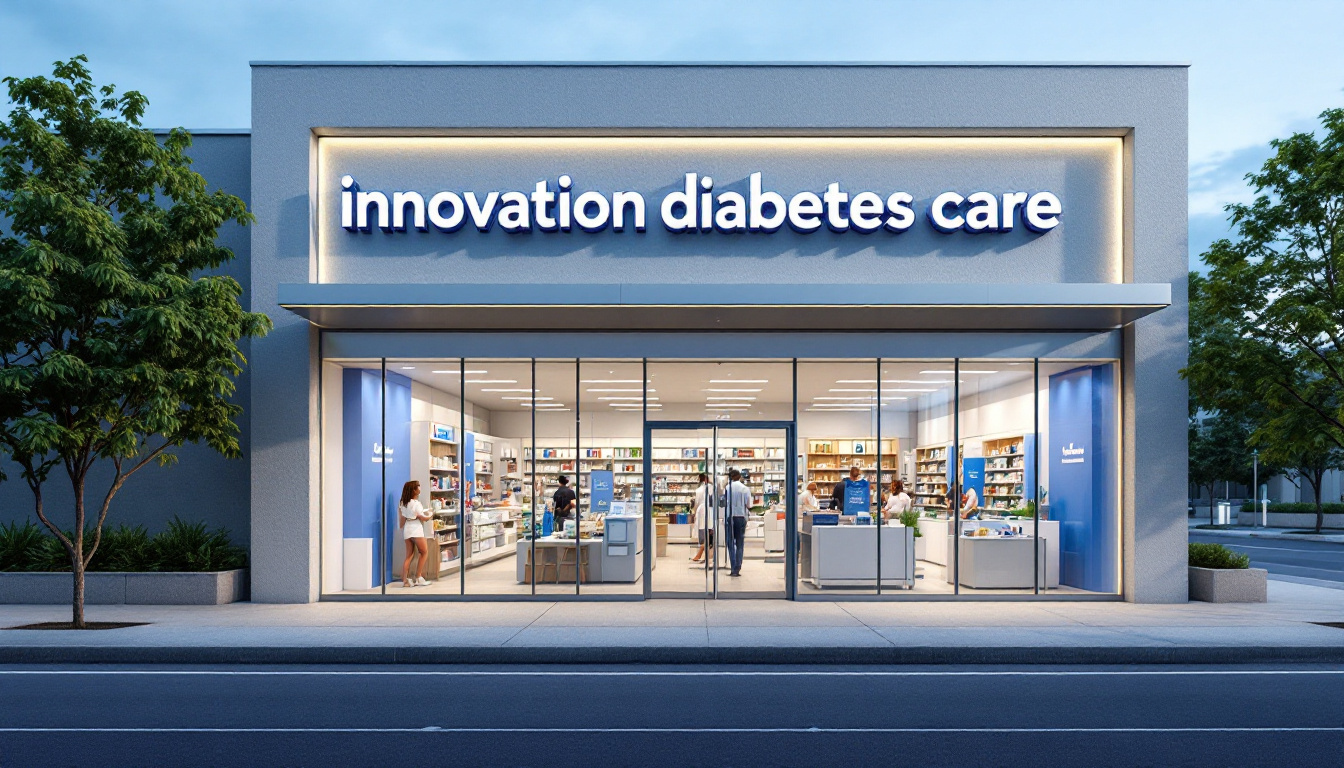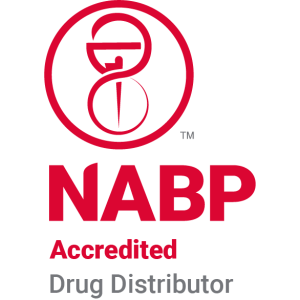The Role of Protein in TPN, IDPN, and IPN Therapy

Introduction: Understanding the Importance of Protein in Nutritional Therapies
Protein is a cornerstone of health for patients undergoing dialysis, serving as a vital nutrient across various nutritional therapies including Total Parenteral Nutrition (TPN), Intradialytic Parenteral Nutrition (IDPN), and Intraperitoneal Nutrition (IPN). This article delves into the role of protein in these therapies, examining clinical guidelines, therapeutic benefits, challenges, and the biochemical impact on patient outcomes.
Significance of Protein in Dialysis Patients
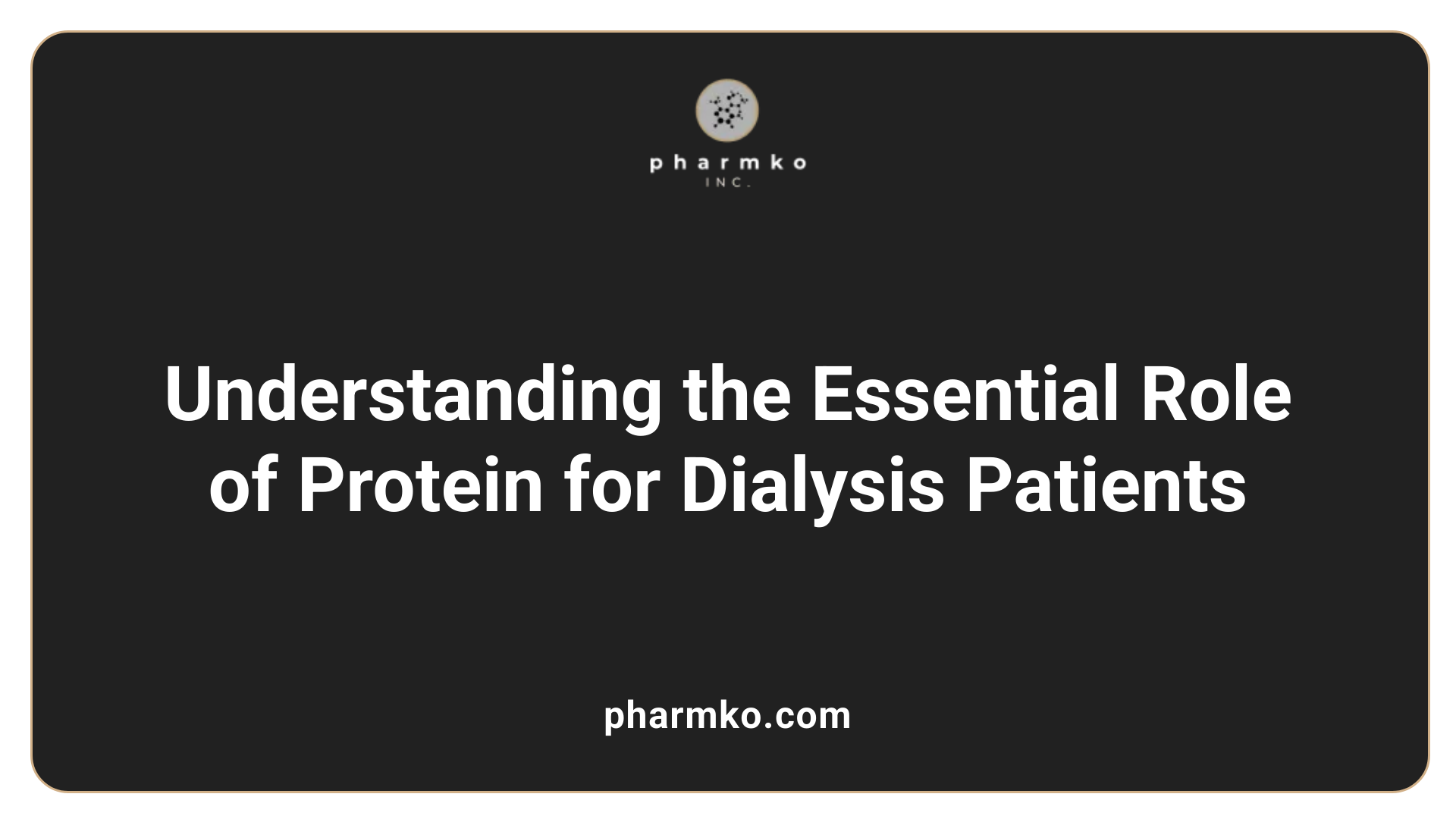
What is the significance of protein in dialysis patients?
The significance of protein in dialysis patients is substantial. These individuals require a higher protein intake to compensate for the protein loss occurring during the dialysis process. Unlike patients with Chronic Kidney Disease (CKD) who aren't on dialysis and must limit protein to reduce kidney stress, dialysis patients need more protein to maintain essential blood protein levels and promote overall health.
Importance of protein intake in dialysis
Adequate protein intake plays a critical role in muscle maintenance, immune function, and improving health outcomes for those undergoing dialysis. The specific protein requirements vary based on individual factors such as overall health and body size, making it essential for patients to consult healthcare professionals for personalized dietary advice.
Impact on health outcomes
Research indicates that patients receiving sufficient protein can improve their serum albumin levels—a strong marker for health outcomes in dialysis. Increased protein intake contributes to positive nitrogen balance and may reduce hospitalization rates associated with malnutrition.
Comparison with CKD patients
In summary, while CKD patients may decrease protein intake to mitigate kidney strain, dialysis patients must increase their intake to address nutrient losses and enhance their overall nutritional status. Incorporating high-quality protein sources, such as animal-based proteins, is recommended to ensure provision of all essential amino acids without excess saturated fats.
Role of Protein in Total Parenteral Nutrition (TPN)
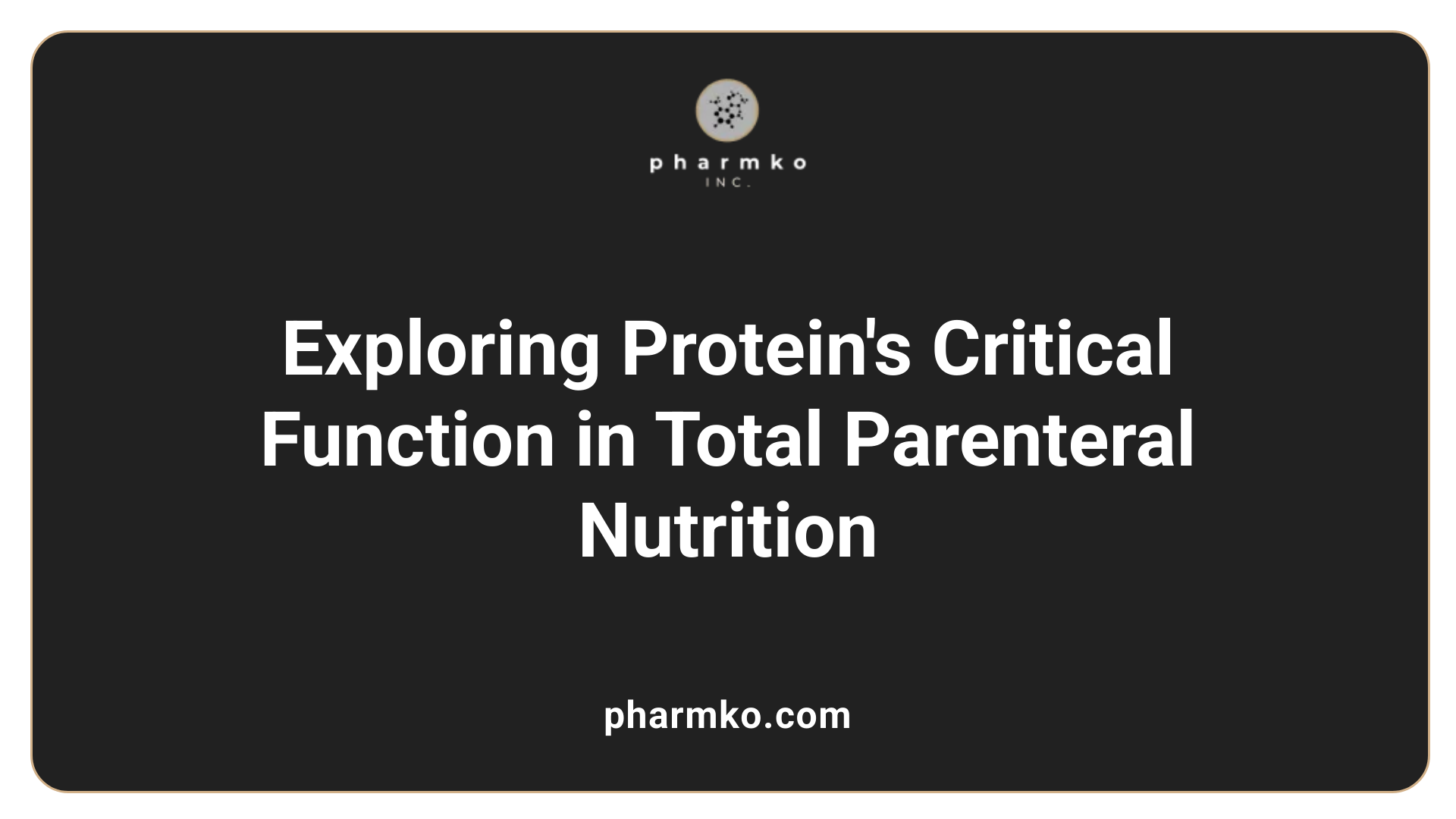
What is the role of protein in Total Parenteral Nutrition (TPN)?
In Total Parenteral Nutrition (TPN), protein is crucial for providing essential amino acids required for tissue synthesis and repair. This is particularly significant for patients unable to receive nutrition orally or enterally for prolonged periods.
Nutritional needs and guidelines
Protein should be delivered in conjunction with carbohydrates and fats as part of a complete nutrient solution. According to nutritional guidelines, approximately 15%-30% of total caloric intake should consist of amino acids to cater to a patient’s specific protein requirements, which vary by age and medical condition.
Clinical management
Effective management of protein in TPN also includes regular monitoring and adjustments of fluid and electrolyte levels to prevent complications, especially in individuals with renal or liver issues. Properly balancing protein intake is a fundamental aspect of ensuring recovery and maintaining physiological functions during extended parenteral nutrition.
Benefits and Challenges of IDPN Therapy
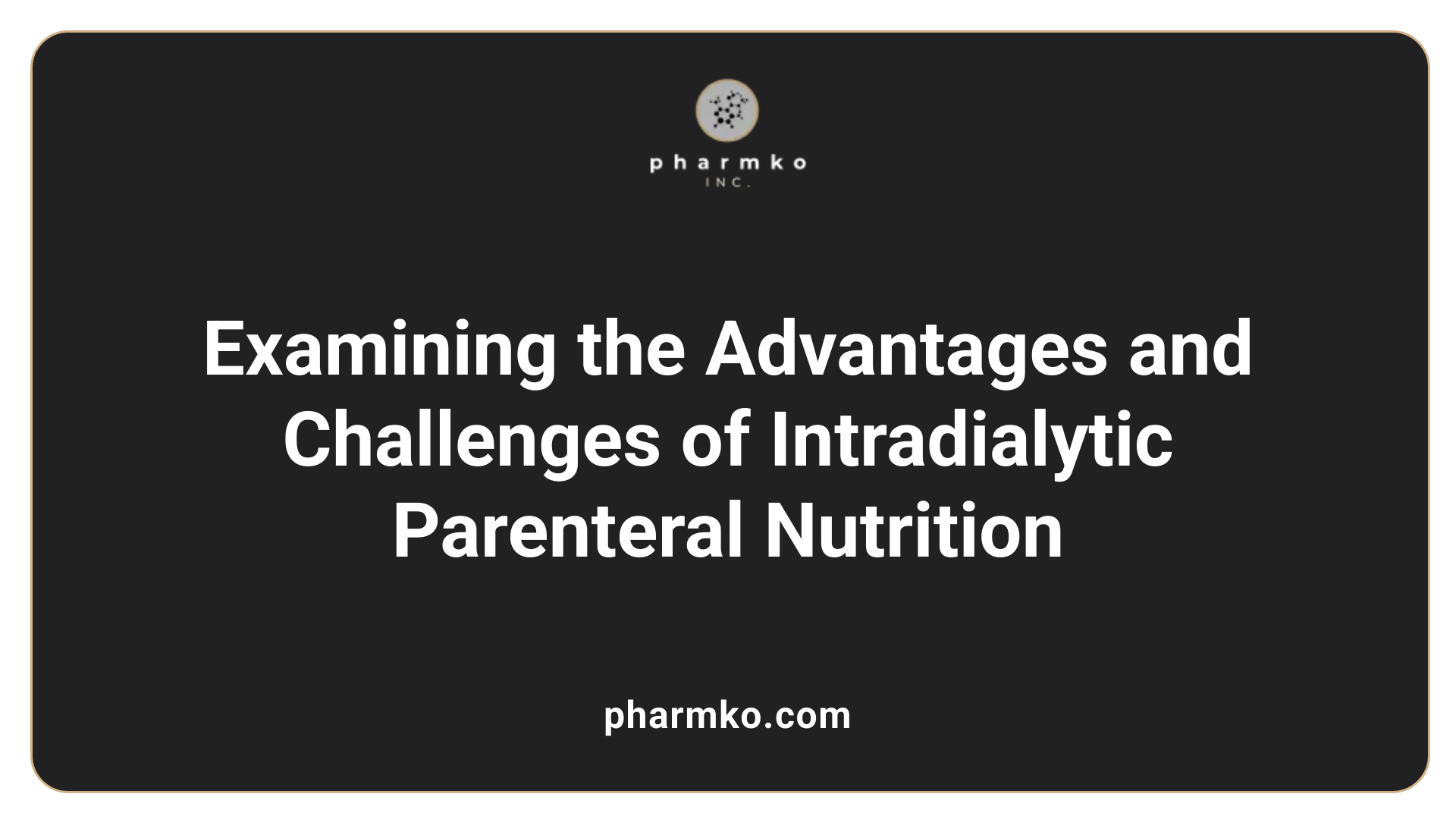
What are the benefits and challenges of Intradialytic Parenteral Nutrition (IDPN) therapy?
Intradialytic Parenteral Nutrition (IDPN) therapy presents several notable advantages for patients undergoing hemodialysis, particularly those experiencing protein-calorie malnutrition. This condition affects approximately 25% to 40% of dialysis patients, making it a critical concern. Here are some of the key benefits of IDPN:
- Enhanced Nutritional Support: IDPN delivers essential nutrients, including proteins, carbohydrates, and fats, enabling patients with poor oral intake to meet their dietary needs during dialysis.
- Improved Protein Balance: Studies indicate that IDPN can create a more anabolic environment in the body, increasing protein synthesis and improving overall nutritional status, including serum albumin levels.
- Potential Reduction in Hospitalization: IDPN has been associated with a decrease in hospitalization rates, thereby improving health expenditure and quality of life for these patients.
Despite these benefits, there are challenges associated with IDPN therapy:
- Complex Administration: Delivering IDPN correctly requires careful monitoring of various parameters such as blood glucose and serum albumin levels to avoid complications like hyperglycemia.
- Mixed Evidence on Efficacy: Existing studies show that while IDPN improves some nutritional metrics, its impact on long-term health outcomes such as mortality and hospitalization remains unclear.
- Supplemental, Not Sole: IDPN is recommended to complement, not replace, oral nutritional intake, which necessitates ongoing dietary management even when IDPN is utilized.
Balancing these benefits and challenges is crucial to optimizing care for malnourished dialysis patients. Effective use of IDPN therapy requires careful patient assessment and ongoing monitoring for the best outcomes.
Differentiating IDPN and IPN
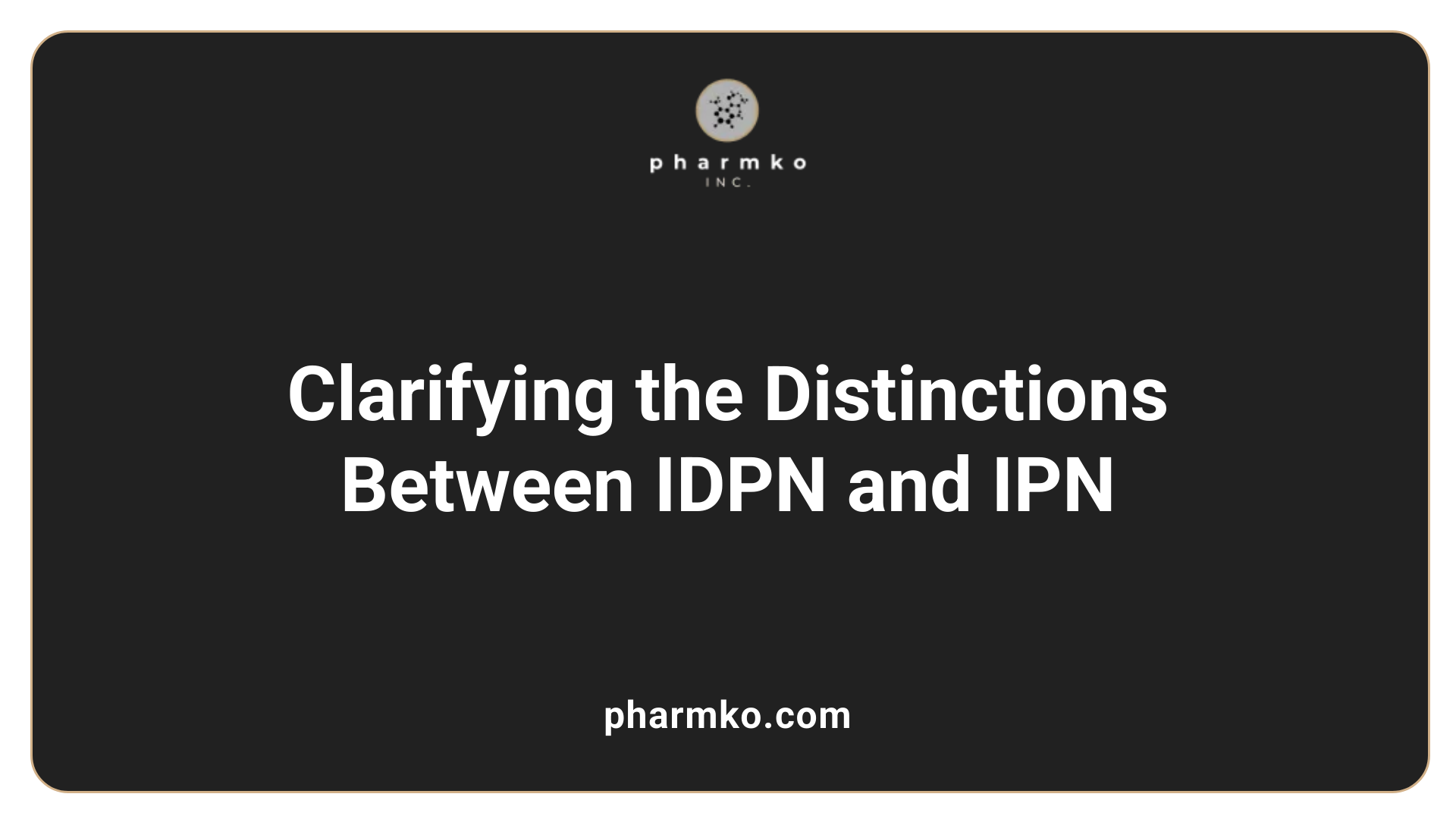
What is the difference between Intradialytic Parenteral Nutrition (IDPN) and Intraperitoneal Nutrition (IPN)?
Intradialytic Parenteral Nutrition (IDPN) and Intraperitoneal Nutrition (IPN) are both nutritional therapies aimed at supporting patients who cannot meet their dietary requirements orally.
IDPN specifics for hemodialysis
IDPN is specifically formulated for patients undergoing hemodialysis. This treatment administers a hyperalimentation formula—including amino acids, glucose, and lipids—directly into the bloodstream during dialysis sessions. IDPN aims to correct protein-energy wasting (PEW) by providing essential nutrients that patients typically lose due to dialysis. Notably, IDPN can facilitate weight gain and boost nutritional status without relying on oral intake compliance.
| Feature | IDPN (Intradialytic Parenteral Nutrition) | IPN (Intraperitoneal Nutrition) |
|---|---|---|
| Administration | During hemodialysis via IV infusion | Through peritoneal cavity as part of dialysate |
| Target Patients | Malnourished patients on hemodialysis | Patients undergoing peritoneal dialysis |
| Nutrient Delivery | Amino acids, glucose, lipids | Protein added to dialysate |
| Goal | Improve protein synthesis, address PEW | Replace protein lost during dialysis |
Comparative benefits
Research has shown that while IDPN may improve short-term nutritional metrics, including serum albumin and weight, it does not significantly enhance long-term survival or hospitalization rates compared to traditional oral supplementation methods. On the other hand, IPN focuses on replenishing protein lost during peritoneal dialysis while managing glucose levels.
Ultimately, both IDPN and IPN serve specific patient groups based on their unique treatment needs, necessitating comprehensive assessments to determine their appropriateness and potential benefits.
Clinical Guidelines for Protein Administration in Nutritional Therapies
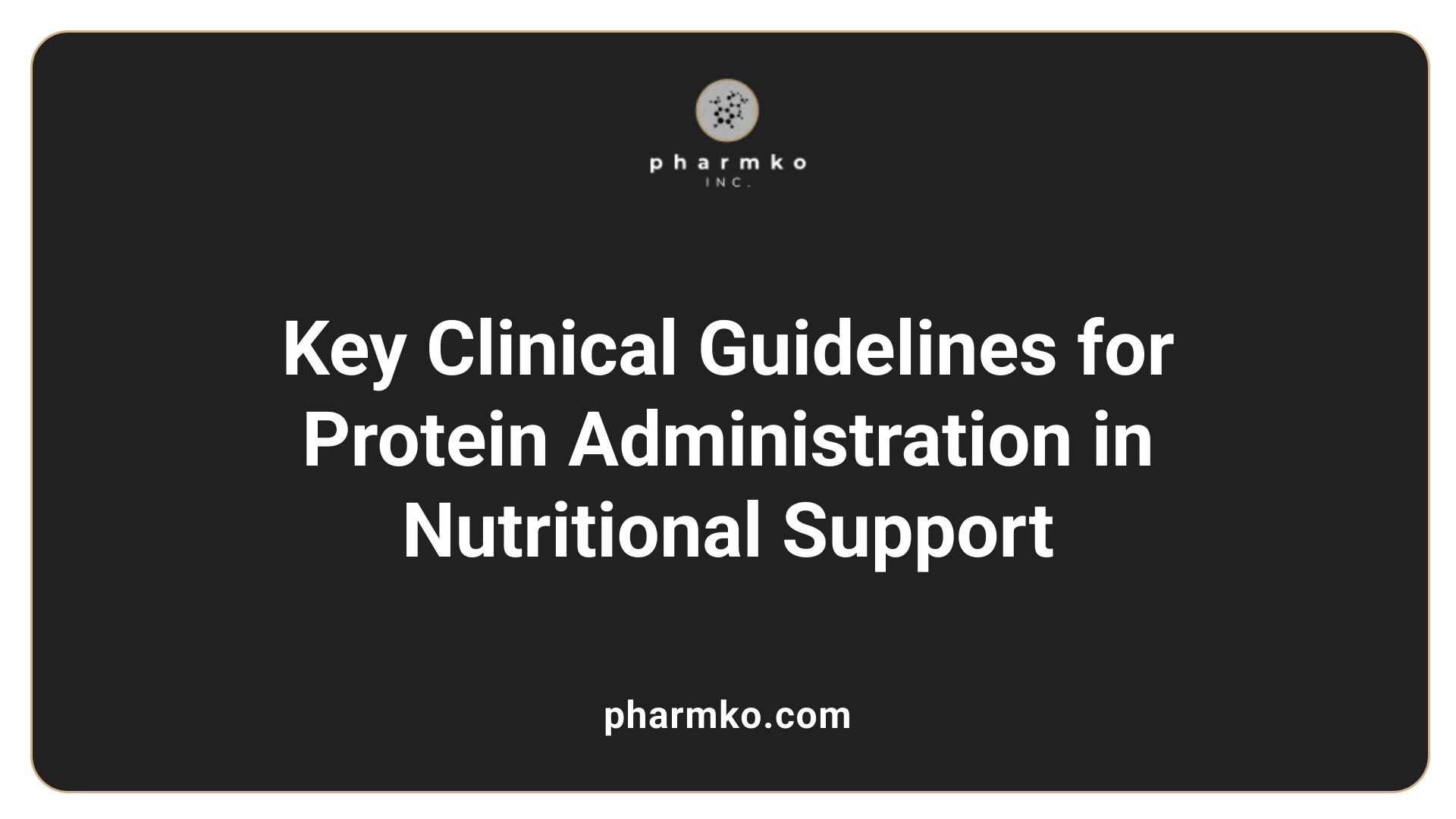
What are the clinical guidelines for protein administration in IDPN and IPN therapies?
Clinical guidelines for protein administration in Intradialytic Parenteral Nutrition (IDPN) and Intraperitoneal Nutrition (IPN) emphasize addressing malnutrition in dialysis patients. IDPN is particularly indicated for patients exhibiting moderate to severe malnutrition who cannot meet their dietary needs through oral consumption or nutritional supplements.
Protein Intake Recommendations: The guidelines suggest a minimum daily protein intake of 1.2 g/kg for patients on hemodialysis, while those on peritoneal dialysis are recommended to consume at least 1.3 g/kg.
Patient Selection: Initiation of IDPN should only occur after thorough assessment confirms that dietary counseling or oral nutritional supplements have been ineffective. This assessment should focus on serum albumin levels and the Malnutrition-Inflammation Score (MIS).
Monitoring and Adjustments: Continuous monitoring is essential to evaluate patient response and identify complications such as hyperglycemia. Adjustments to therapy should be made based on individual nutritional needs, ensuring both efficacy and safety.
By adhering to these guidelines, healthcare teams can significantly improve nutritional outcomes for patients undergoing dialysis.
Addressing Protein-Energy Wasting (PEW) in Dialysis Patients
Role of IDPN and IPN in PEW management
Intradialytic Parenteral Nutrition (IDPN) and Intraperitoneal Nutrition (IPN) are vital strategies for managing Protein-Energy Wasting (PEW) in dialysis patients. These therapies deliver essential nutrients directly into the bloodstream during dialysis sessions, addressing the significant nutrient losses that occur during treatment. IDPN aids in providing amino acids, carbohydrates, and lipids, enabling patients to receive up to 25% of their daily nutrient intake without relying on oral consumption. On the other hand, IPN delivers proteins directly as part of the peritoneal dialysate, effectively compensating for losses of essential nutrients during peritoneal dialysis.
Impact on patient outcomes
The implementation of IDPN and IPN has shown promising results in improving various aspects of patient health. Studies indicate that serum albumin levels—a crucial marker of nutritional status—increased in patients receiving IDPN, suggesting enhanced protein synthesis and improved nutritional balance. Additionally, evidence reveals reductions in hospitalization rates and length of stays, thus highlighting improved clinical outcomes. However, while benefits are noted in short-term nutritional status, long-term impacts on mortality and quality of life remain inconclusive, underscoring the need for further research.
Nutritional strategies
A multifaceted approach is recommended for managing malnutrition in dialysis patients. This includes initial dietary counseling, followed by oral nutritional supplements (ONS), and subsequently considering IDPN or IPN if these methods fail. Continuous monitoring of nutritional biomarkers, such as serum albumin and body weight, is essential to evaluate the effectiveness of interventions and ensure nutritional goals are met. For patients with functioning gastrointestinal tracts, IDPN is often covered under insurance, making it an accessible option in nutritional management.
| Nutritional Therapy | Delivery Method | Key Benefits |
|---|---|---|
| IDPN | Intravenous during hemodialysis | Increases serum albumin; combats malnutrition |
| IPN | As a part of peritoneal dialysate | Replaces amino acids lost; maintains nutritional status |
| Dietary counseling | Oral recommendations | Initial approach to prevent malnutrition |
| Oral Nutritional Supplements (ONS) | Oral intake | Supplement food intake when necessary |
| Continuous Monitoring | Regular assessments | Evaluates nutritional status and efficacy of interventions |
This structured approach aims to achieve optimal nutrition and ultimately improve the quality of life for patients undergoing dialysis.
Biochemical Mechanisms of Protein Supplementation in Dialysis
Protein synthesis and catabolism
In patients undergoing chronic hemodialysis, Intradialytic Parenteral Nutrition (IDPN) plays a significant role in enhancing protein metabolism. It achieves this by shifting the body's state from catabolism, where protein breakdown predominates, to an anabolic state that promotes protein synthesis. This transition is critical for restoring and maintaining muscle mass and overall nutritional status.
Biochemical pathways
IDPN introduces essential nutrients, primarily amino acids, into the bloodstream during dialysis. This infusion enhances protein synthesis in skeletal muscle tissues, particularly noted in an increase in forearm muscle protein synthesis. Notably, patients can lose between 13 to 20 grams of protein during each dialysis session, making the timing of IDPN infusion essential for minimizing these losses and improving nutrient uptake.
Therapeutic implications
The implications of improved protein balance using IDPN are profound. Enhanced serum albumin levels, which are associated with better clinical outcomes such as reduced hospitalization rates, further emphasize the need for targeted nutritional interventions. Clinical studies have shown that IDPN not only increases serum albumin levels but also contributes to better overall nutritional markers, thereby improving the quality of life for dialysis patients. Regular monitoring of nutritional status and biochemical markers, like serum albumin, remains essential to optimize patient outcomes in those receiving IDPN during their hemodialysis sessions.
Implementation of IDPN: Protocols and Best Practices
IDPN Administration Protocols
Intradialytic Parenteral Nutrition (IDPN) is administered during hemodialysis treatments through an intravenous line. It typically consists of amino acids, glucose, and lipids. A commonly used formulation is comprised of 10% amino acids, designed to provide 1,000 kcal during each treatment session. The protocol generally allows patients to receive up to 25% of their total daily nutrient needs during dialysis.
Monitoring and Evaluation
Monitoring patients undergoing IDPN is crucial for assessing the effectiveness and addressing potential complications. Key parameters include:
| Parameter | Frequency | Importance |
|---|---|---|
| Blood glucose levels | Every session | To prevent hyperglycemia |
| Serum albumin levels | Monthly | Indicator of nutritional status and risk of mortality |
| Body weight | Monthly | Assess changes in nutritional status |
| Malnutrition-Inflammation Score | At baseline and post-treatment | To evaluate response to IDPN therapy |
Patient-Specific Considerations
IDPN is particularly indicated for malnourished patients who struggle with oral intake. Initiation criteria for IDPN include very low serum albumin levels (<3.0 g/dL) and high Malnutrition-Inflammation Scores (>10 out of 30). Long-term evaluation is essential to ensure that the treatment continues to meet individual nutritional requirements and enhance overall health outcomes.
Investigating the Outcomes of Long-Term IDPN Usage
Long-term efficacy studies
Research into the long-term efficacy of Intradialytic Parenteral Nutrition (IDPN) is essential to understand its lasting benefits for chronic hemodialysis patients. Although IDPN has shown promising results in short-term studies, including improvements in protein synthesis and nutritional parameters, evidence for sustained benefits is still emerging. Current studies indicate that while patients experience immediate enhancements in serum albumin levels and reduced malnutrition scores during IDPN use, questions remain regarding the effectiveness of these results over extended periods.
Impact on survival and health metrics
Long-term clinical trials are needed to better ascertain the impact of IDPN on survival rates and other health metrics in hemodialysis patients. Some evidence suggests that although IDPN may not significantly reduce hospitalization or mortality compared to standard nutritional interventions, it provides essential support that could potentially influence these outcomes over time. Notably, patients’ improvements in body weight and muscle mass are encouraging signs that merit further investigation.
Potential for improvement
The potential for improvement in chronic hemodialysis patients through IDPN lies in addressing the chronic nutrient losses experienced during dialysis. Despite indications that IDPN can help achieve positive nitrogen balance, more conclusive data regarding its role in enhancing long-term survival and overall health is crucial. Ongoing research efforts will be vital in determining whether IDPN can be an effective strategy to combat malnutrition and improve life quality in this vulnerable population.
Challenges in the Clinical Implementation of IPN
Patient and procedural challenges
Implementing Intradialytic Parenteral Nutrition (IDPN) comes with several patient and procedural challenges. Many patients undergoing hemodialysis face issues such as poor compliance with oral intake due to taste alterations or anorexia, complicating their nutritional status. Additionally, IDPN requires careful management of infusion rates and volumes, as excess fluid can exacerbate complications such as volume overload. Patient-specific factors, including gastrointestinal function and response to treatment, must be assessed regularly.
Clinical implications
The clinical implications of IDPN are significant, particularly in terms of monitoring and optimizing outcomes. Healthcare providers need to establish comprehensive protocols to assess efficacy and track potential complications like hyperglycemia. Nutritional parameters, such as serum albumin levels, must be frequently evaluated to ensure that patients are achieving desired nutritional goals. Lack of improvement in clinical outcomes, such as hospitalization rates and quality of life, suggests that while IDPN provides essential nutrients, additional strategies may be required to significantly enhance patient welfare.
Optimizing results
To optimize results, clinicians need to ensure seamless integration of IDPN into existing dialysis protocols. Regular monitoring of protein intake, blood glucose, and subjective assessments of nutrition can help tailor interventions effectively. Collaboration between nephrologists, dietitians, and nursing staff is essential to create individualized plans that meet each patient's unique nutritional requirements during treatment. Ultimately, ongoing clinical trials for long-term effectiveness and patient outcome assessments are vital to address the uncertainties surrounding IDPN's long-term benefits.
Integrating IDPN and IPN into Comprehensive Nutritional Therapy
Role in holistic patient management
Intradialytic Parenteral Nutrition (IDPN) and Intraperitoneal Nutrition (IPN) are pivotal components in the nutritional management of patients undergoing dialysis. These therapies target the unique nutrient loss experienced during hemodialysis and peritoneal dialysis, respectively. By infusing essential nutrients, they address protein-energy wasting (PEW), alleviating malnutrition and subsequently enhancing patient health outcomes such as serum albumin levels and overall well-being.
Combination with other therapies
While IDPN and IPN stand as effective methods for nutritional support, their integration with oral nutritional supplements and dietary counseling can further optimize outcomes. For patients struggling with oral intake due to taste biases or dietary restrictions, these therapies provide a reliable means to fulfill nutritional needs without solely relying on patient compliance. They are typically introduced after other strategies have proven inadequate, making IDPN and IPN critical in a progressive nutritional support hierarchy.
Dietary integration
Guidelines, including those from the National Kidney Foundation, recommend combining IDPN and IPN with dietary measures tailored to each patient's needs. Monitoring patients' total protein intake is essential, as achieving 1.2 g/kg per day for hemodialysis patients is crucial to mitigate the risks of malnutrition and associated morbidity. Leveraging the strengths of IDPN and IPN within a broader dietary framework ensures comprehensive care, fostering better health outcomes for patients engaging in chronic dialysis.
Evaluating the Economic and Accessibility Aspects of IDPN/IPN
Costs and Insurance Coverage
The costs associated with Intradialytic Parenteral Nutrition (IDPN) and Intraperitoneal Nutrition (IPN) can vary significantly based on healthcare providers and individual patient needs. Insurance coverage plays a crucial role in determining patients' access to these nutritional therapies. Medicare may cover IDPN and IPN under Part B or Part D, contingent upon the patient’s gastrointestinal function and compliance with medical necessity criteria.
Patient Accessibility
Accessibility of nutritional support through IDPN and IPN is imperative for patients who cannot meet their dietary requirements via oral intake. This therapy is covered as a medical benefit by providers like Independent Health, eliminating prior authorization requirements, thus encouraging timely access.
Resource Allocation
Proper allocation of resources is essential in delivering IDPN and IPN effectively. Facilities must ensure that they have the infrastructure to administer these therapies efficiently while also managing costs. Increased resource allocation can lead to improved health outcomes, reduced hospitalization rates, and better nutritional statuses for patients, ultimately resulting in overall healthcare savings.
Future Directions for Research in Nutritional Support for Dialysis
Ongoing Clinical Trials
Current studies are exploring the long-term effects of Intradialytic Parenteral Nutrition (IDPN) on nutritional status and quality of life. These trials include variables that assess serum albumin levels, body weight changes, and overall health outcomes such as hospitalization rates.
Emerging Therapies
Research is increasingly shifting towards tailored nutritional interventions that consider individual patient needs and preferences. This might involve combining IDPN with new oral nutritional strategies or even alternative routes of nutrient delivery to enhance protein synthesis and minimize further nutrient losses during dialysis sessions.
Research Gaps
Despite the promising short-term benefits of IDPN, there remain significant gaps in understanding its long-term effects on mortality and chronic illness management. Additional studies are needed to establish clearer guidelines for tailoring nutritional therapy to specific populations, particularly focusing on patients identified as high-risk for protein-energy wasting (PEW).
| Topic | Description | Importance |
|---|---|---|
| Ongoing Clinical Trials | Assess long-term effects of IDPN | Determine sustainability of nutritional improvements |
| Emerging Therapies | Explore combination therapies | Enhance efficacy of nutritional interventions |
| Research Gaps | Address long-term outcomes of IDPN therapy | Improve patient care and outcomes in dialysis patients |
Educating Healthcare Professionals on Protein's Role in Dialysis Nutrition
Training Programs
Healthcare professionals must understand the significant role of protein in dialysis nutrition. Structured training programs should focus on the dietary needs of hemodialysis patients, highlighting the recommended daily protein intake of at least 1.2 g/kg. This ensures that clinicians can accurately assess patients for protein-energy wasting (PEW) and identify those needing interventions like Intradialytic Parenteral Nutrition (IDPN).
Educational Resources
Developing resource materials is crucial for continuous education on protein intake and malnutrition management in dialysis patients. Resources may include pamphlets, online courses, and workshops that cover:
- The importance of maintaining serum albumin levels above 4.0 g/dL.
- Guidelines on implementing IDPN effectively when oral intake is insufficient.
- Monitoring essential parameters during IDPN treatment, such as blood glucose and protein markers.
Improving Clinical Outcomes
With more education, healthcare providers can enhance clinical outcomes, such as improved serum albumin levels and reduced hospitalization rates. Evidence suggests that well-educated healthcare teams lead to better management of malnutrition, ultimately increasing patients’ weights, muscle mass, and overall health. As a result, systematic educational efforts can transform how dialysis patients experience nutritional care and support.
Conclusion: Enhancing Patient Outcomes Through Advanced Nutritional Support
In light of the data and evidence presented, protein remains a pivotal component in the nutritional management of patients undergoing dialysis. Whether through Total Parenteral Nutrition, Intradialytic Parenteral Nutrition, or Intraperitoneal Nutrition, the strategic use of protein can significantly impact patient health outcomes, addressing prevalent issues such as Protein-Energy Wasting. As research continues, healthcare professionals must stay informed on advancements in nutritional therapies to ensure these interventions effectively improve quality of life and survival rates for this vulnerable patient population.
References
- Intradialytic parenteral nutrition improves protein and energy ...
- Intradialytic parenteral nutrition for patients on hemodialysis
- IDPN & IPN Nutrition Therapy for Dialysis Patients, What's the ...
- Intradialytic Parenteral Nutrition and Intraperitoneal Nutrition
- [PDF] Intradialytic Parenteral Nutrition (IDPN) - BC Renal
- [PDF] Total Parenteral Nutrition (TPN) / Intradialytic Parenteral Nutrition ...
- The beneficial effects of intradialytic parenteral nutrition in ... - Nature
- [PDF] INTRADIALYTIC PARENTERAL NUTRITION (IDPN)








